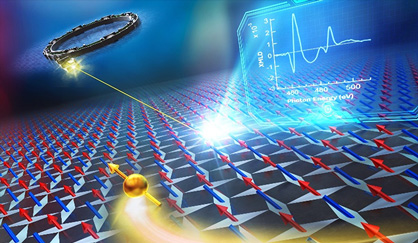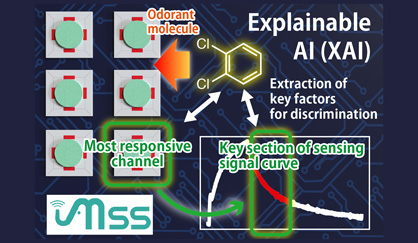Simultaneous Imaging of Intracellular DNA and RNA Using Harmless Light
— Toward the Early Detection of Cell Aging and Damage for Disease Prevention and Treatment —2025.10.27
NIMS (National Institute for Materials Science)
Nagoya University
Gifu University
NIMS, in collaboration with Nagoya University, Gifu University, and the University of Adelaide, has developed a method for simultaneously imaging DNA and RNA inside cells using harmless infrared to near-infrared light. This study enables high-precision detection of all stages of cell death, paving the way for early detection of cell aging and damage for disease prevention. The results were published in Science Advances on October 23, 2025.
Abstract
Background
Key Findings
It opens new possibilities for ultra-early detection of cellular damage and aging, non-toxic live-cell diagnostics, and high-throughput drug screening workflows.

Figure. Using two types of harmless red-to-near-infrared light, both DNA and RNA can be distinguished simultaneously inside a cell (left), and cell aging progression can be observed (right).
Future Outlook
Other Information
- This study was conducted by Linawati Sutrisno (ICYS Research Fellow, NIMS), Gary J. Richards (Postdoctoral Researcher, MANA, NIMS), Michio Matsumoto (Researcher, Molecules Group, MANA, NIMS), Jonathan P. Hill (Group Leader, Functional Chromophores Group, MANA, NIMS), and Katsuhiko Ariga (Specially Appointed Researcher, MANA, NIMS); Koichiro Uto (Principal Researcher, Smart Polymer Group, Research Center for Macromolecules and Biomaterials, NIMS); Xianglan Li (NIMS Engineer, Bioanalysis Unit, Research Network and Facility Services Division); Jack D. Evans (Researcher, University of Adelaide); Masayasu Taki (Professor, Gifu University); and Shigehiro Yamaguchi (Professor, Nagoya University).
- The findings were published online in the open-access journal Science Advances on October 23, 2025.
Published Paper
Authors : Linawati Sutrisno, Gary J. Richards, Jack D. Evans, Michio Matsumoto, Xianglan Li, Koichiro Uto, Jonathan P. Hill, Masayasu Taki, Shigehiro Yamaguchi, and Katsuhiko Ariga
Journal : Science Advances
DOI : 10.1126/sciadv.adz6633
Publication Date : October 23, 2025
Contact information
Regarding This Research
ICYS Research Fellow, NIMS
Specially Appointed Researcher, MANA, NIMS
TEL: +81-29-860-4597
Professor, Institute of Transformative Bio-Molecules
Nagoya University
URL: https://orgreact.chem.nagoya-u.ac.jp/en/ (Yamaguchi Group | Functional Organic Materials Laboratory, Nagoya University)
Professor, Institute for Glyco-core Research
Gifu University
URL: https://www1.gifu-u.ac.jp/~bfc/en/ (Biofunctional Chemistry Laboratory | Institute for Glyco-core Research (iGCORE), Gifu University)
Media Inquiries
Division of International Collaborations and Public Relations
National Institute for Materials Science
1-2-1 Sengen, Tsukuba, Ibaraki 305-0047, Japan
TEL: +81-29-859-2026
FAX: +81-29-859-2017



